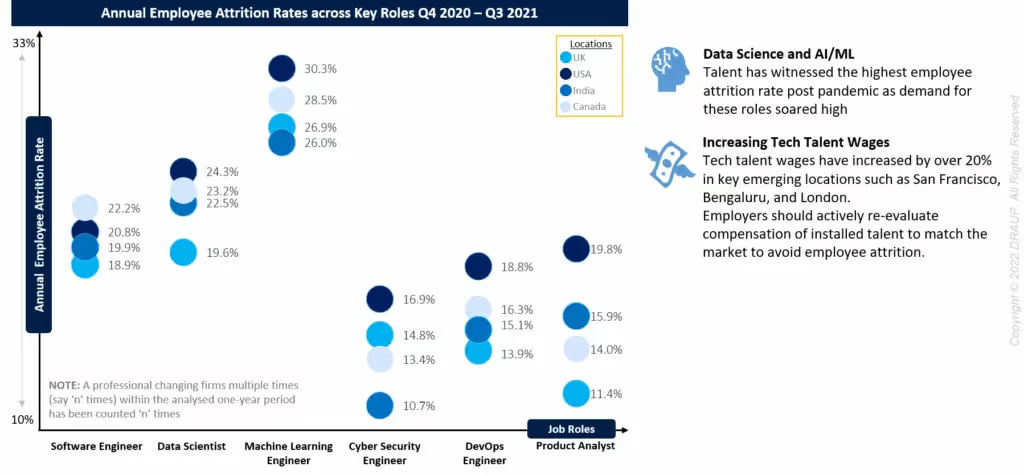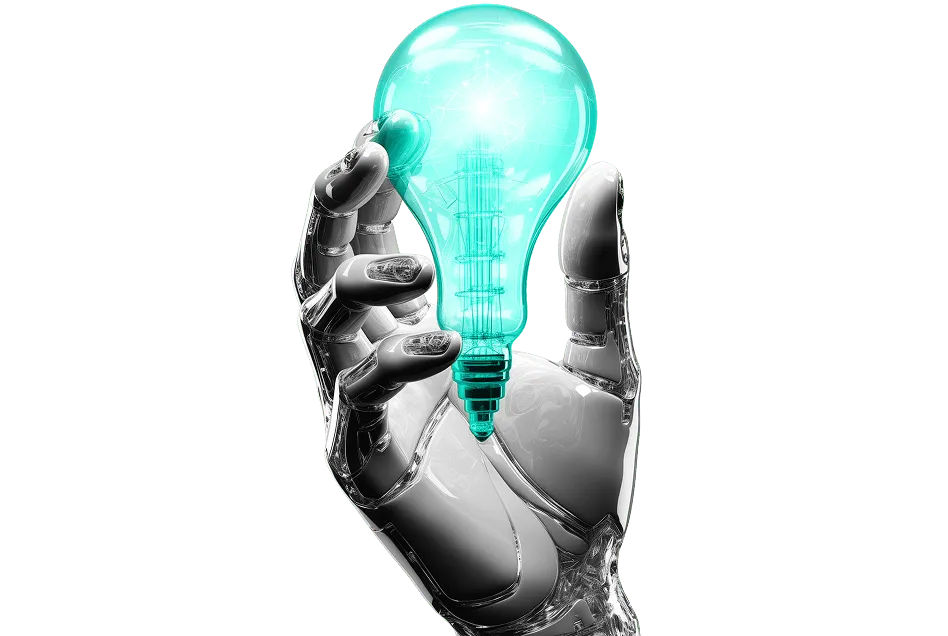A Deep-Dive Into the Evolution of Digital Labor & the Interconnectedness of Job Families
In 2021, companies made record cloud investments. The pandemic has been devastating for many sectors of the economy and created an unprecedented global health crisis. But at the same time, it created an accelerated digital transformation across industries. While the investments have been significant, leadership and board members are now thinking about getting the best out of such investments. To truly become a Digital Enterprise and take full advantage of Cloud, Workforce Planners and Talent Acquisition teams must understand the Future of the Workforce in granular detail. The boundaries and the impacts of Digital Work are constantly evolving. Just last month, JP Morgan was fined by SEC as employees used Whatsapp and other personal forms of communication with customers as that created bottlenecks in record keeping. Such digital regulations may expand outside the industry verticals of Financial companies and Banks. This complex change and dynamics make digital enterprise development a constant journey.
At Draup, we aim to prepare you for the Digital Labor Age. To truly understand this, we must focus on the interrelationships of the various job families and skills. Dr. Yuval Noah Harari, a historian, states that humans are relatively weak animals whose advantage rests in their ability to cooperate in large numbers. And the reason we have been so successful is that “large numbers of strangers can cooperate successfully by believing in common ideas (from the book Sapiens).
Today, there is an interconnectedness that dictates the evolution of skills. All the foundational investment in infrastructure into the cloud enables better decision-making by helping us collect better Analytics and test various hypotheses. But when Draup investigates the skills that companies are sourcing, we see Enterprises are still not moving faster to take advantage of the investments they have made. This also paves the way for talent getting disengaged. Not having the right tools and platforms will force the labor force to go to companies with this talent. Let us look at the global attrition trends based on our profiles dataset updates (please use this as directional only as sometimes there may be a delay in resume updates). For example, many data scientists leave the organizations once they realize that companies do not have the latest platforms and tools to use. The great work done by the incredible recruitment team in hiring the resources is lost if we do not have the right Digital Tech stack!

To understand the evolution of Digital Labor, we have to understand the interconnectedness of the Job Families. The following illustration depicts this concept

What is the primary goal of all the Digital Investments and Cloud Transitions?
Perhaps enquiring through this question may give us compelling insights. But before we get into this aspect, let me explain this Digital layer’s IT/Software aspect of an organization. The reason we are emphasizing that Workforce Planners and Recruiters should understand this is that this simple understanding will make you very effective in all your conversations (even if you are not directly involved in technical recruiting)
A digital organization from the technology side can be imagined having these layers (this is kept relatively simple for easy understanding and not making it too technical)
Front End Frameworks: It’s somewhat analogous to the framework for a house—which might include instructions on building windows, doors, etc. The house’s developer can then decide how to take the framework’s rules and build the house. So these frameworks decide how we build the software products. You will hear Angular, React, and Backbone frameworks in this category. All those are different frameworks accomplishing the same goal.
Server Side or Backend Frameworks: The application you write (or the house you build) must stay secure, scale quickly, integrate well with other systems, and several other factors. These are collectively referred to as the backend frameworks. Here, you will hear several Java-based backend frameworks and Django (python-based) skills. Many of the Java Developers’ postings you see will be for this need.
Database: This is a framework to store the data. SQL is a crucial skill here, and you will hear platforms such as Cassandra/MongoDB that gives enormous scalability advantages
Cloud Infrastructure: Ensures on-demand availability of systems, optimizes computation. Here you will hear terms like AWS, Azure, GCP, and so onThis understanding will help you place various skills that a Digital Organization is trying to source. Terms will evolve, and products will come and go, but this layer will be helpful.
What is the primary goal of all the Digital Investments and Cloud Transitions?
One way to think about this is to collect Analytics better and make better decisions. This aspect impacts all the employees/job roles and skills. Here is a summary of various skills and roles we are seeing gaining traction. These skills are roles will be helpful for organizations in 2022 and beyond
- Business Intelligence Analyst: Gone are the days when Business Analysts used only MS Excel. SQL has become an essential skill, and tools like Snowflake that makes it easy to pull large volumes of data and analyze it in a spreadsheet-like format are becoming popular
- Project Management: Here, several workflow products like Airtable are beginning to play a role. The key here is a seamless digital collaboration
- Data Engineering: This is different than Data Science. To have a good data science team, Data Engineering is crucial. Essentially ensures plumbing lines so that Data Scientists can get all the relevant data when they need it for their models. Kafka is becoming a prevalent skill in this area.
- Developer Advocates: This role was used by Google more in an external capacity (basically working with Developers across the globe to promote Google Products). Beginning 2022, Google has opened jobs that will work with Engineers within Google to listen to their technical and business constraints to report Developer challenges in an organized way. This is an exciting advocacy model
- Anthropologists: We are beginning to see the importance of Anthropologists in Enterprises. As companies scale, diverse workforce across different cultures will necessitate the need for proper understanding, and people with Anthropology background will be very good as People Analysts
- Physicists: Many AI researcher roles are seeking advanced physics degrees. This is also expanding into other areas of technology
- Data Analyst – Auto ML: Tools like Data Robots are becoming popular as a Data Analyst can quickly build a Machine Learning model using such a platform. We expect this layer to grow more in 2022
- Decision Support: Across various functions such as Supply Chain, Forecasting, Manufacturing, we are seeing an increase in the sourcing of Industrial Engineering and Operations Research skills
- Full Stack: In the framework we explained, a resource that can work both on the front end and back end as a software engineer are certainly on demand. This approach was first popularized by Facebook- Now Meta. (they are, in simpler terms, Generalists)
Overall, we are pretty excited about the role HR can play under emerging circumstances. If we plan the initiatives correctly, we can accelerate transformation and adaptation and make the enterprises genuinely care for a great workplace.










.svg)




















.svg)





.svg)
